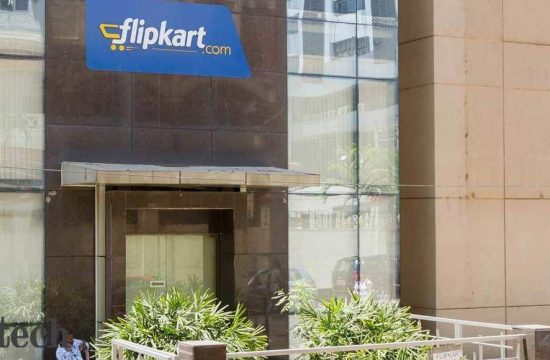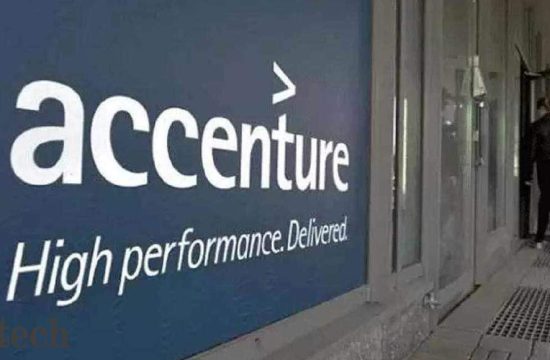
In late October, when San Francisco moved into California’s least-restrictive Covid-19 “yellow tier” — indicating minimal spread of the coronavirus — Lauren Crabbe was hopeful.
Crabbe, the owner of Andytown Coffee Roasters, had already reopened three of her four cafes. The outstanding location downtown, in San Francisco’s financial district, looked poised to come back online soon. Transitioning to the “yellow tier” meant non-essential offices, which housed many of her former customers, could resume operations.
Then, a wave of coronavirus cases pushed San Francisco and nearby counties to clamp down on social gatherings once again. It was just the latest setback for a slew of Bay Area small businesses struggling to offset Covid-19’s financial toll and navigate ever-shifting restrictions.
“That sort of glimmer of hope…was gone so quickly,” Crabbe said. “With 2020, you just had to set your expectations so low. Why would things get back to normal?”
Despite some stronger-than-expected macroeconomic indicators throughout the fall, the economic picture across the U.S. has once again dimmed. In December, American employers slashed 140,000 jobs, while consumer spending fell for the third consecutive month. The U.S. has regained only about 45% of the economic ground lost in the first half of 2020. Of the 22 million jobs that disappeared last March, 10 million have yet to return.
That feeble recovery has weighed heavily on the nation’s small business owners. Small business confidence slipped last month to 95.9, according to a survey by the National Federation of Independent Businesses. That’s below the historical average of 98 and marks the lowest reading since May. Companies have also lowered sales expectations over the next three months.
Between mid-March and July, an estimated 400,000 small businesses nationwide closed their doors for good, according to the Hamilton Project, an economic policy wing of the Brookings Institution. That pain persisted. Across all of 2020, the American small business landscape shed 30% of its storefronts.
The financial distress is particularly acute in the San Francisco Bay Area. Since the first shelter-in-place order took effect in San Francisco in mid-March, the city has seen a 45% drop in the number of open small businesses, according to new data compiled by the San Francisco Chamber of Commerce.
During the first few weeks of 2021, persistently high virus counts and a slow vaccine rollout have further tested the endurance of companies already battered by the pandemic. The state of California has begun to relax restrictions as infection rates finally begin to drop. Still, with entire sections of the U.S. economy still frozen in amber and lingering uncertainty around additional fiscal relief under President Joe Biden’s new administration, small business owners in the Bay Area and across the country are increasingly anxious about their future.
Some are once again in jeopardy of permanently shuttering. Others, facing mounting obstacles, have been forced to display their agility once more.
The art of the pivot
Since the pandemic struck, several Bay Area entrepreneurs have reorganized their operations entirely to keep business afloat. Some have done so several times.
Back in March, Mike Seramin, owner of Abbey Party Rents in Daly City, pivoted his party supply business to support hospitals and health care services. Seramin, used to booking 20 events per day of all sizes, was netting only a handful of new clients each week. Reliable revenue streams dried up, and he was forced to cut his 70-person staff to seven full-time employees. To keep money coming through the door, his team provided tenting, generators, tables and chairs for outdoor Covid-19 testing centers. That allowed the company to bring back about ten full-time employees.
Business owners like Seramin thought they might just need to bridge a month-long gap. But, after seeing his usual customer base wouldn’t return in short order, he decided to make a bigger change.
In late May, Seramin merged businesses with Liz Curtis, a long-time advisor and founder of Table + Teaspoon, a San Francisco-based rental service that offers preplanned table setting kits. In early July, their new company, Fulcrum Group, launched micro-party packages, tailored to socially distanced gatherings and replete with tables, chairs, spreads, masks, and hand sanitizers. The business targeted customers looking to rent out the packages for a week to host several small events with friends.
The team devoted a month to designing these packages and locked in more than 20 orders. Then, the Northern California wildfires hit in August and air quality across the Bay Area plummeted.
“There was just no winning in 2020,” Curtis said. “We couldn’t even safely celebrate outdoors.”
Seramin added it felt like “ten rounds in a boxing match” trying to make the business work.
Wind speeds over 90 mph across the Bay Area in early January added yet another weather-inflicted hurdle — this time, to their tent business.
Even with those tent services — both for COVID-19 testing and certain commercial uses like outdoor dining — Seramin said the Fulcrum Group scored 1,356 contracts in 2020. That’s down from 6,582 in 2019. Hospitals accounted for roughly 95% of the revenue last year.
Online and wholesale help save some businesses
Seramin and Curtis spearheaded entirely new business models to preserve their staff of 12 full-time and six part-time employees.
Others, like Crabbe, have capitalized on building out existing channels — most notably online ordering. In 2020, Andytown tallied record online sales, packing more than 18,000 orders. That’s a nearly fourteen-fold increase from the 1,200 in 2019.
As a result, Crabbe actually expanded Andytown’s employee roster last year, creating three new leadership positions. After laying off roughly 25 employees at the start of the pandemic in mid-March, she had re-hired her entire 55-person staff by early July.
“Since Covid hit, so much of what I’ve been doing as a business owner is just trying to stabilize the business enough so that we’re not hemorrhaging money,” Crabbe said. “I feel very fortunate being in the coffee industry and having multiple avenues where I can sell my beans.”
Another one of those avenues? Andytown’s wholesale segment, which saw a meaningful bump thanks to a surge in grocery sales. Instead of sending weekly coffee shipments to offices and restaurants around the Bay Area in bulk containers, the company has shifted to mostly distributing half-pound bags to fill grocery store shelves and fulfill online order requests.
“We are selling more individual retail bags of coffee than we ever have,” Crabbe said. “I don’t think we’re out of the woods yet, by any means, but I feel like we’re in a good position.”
Events and venues ‘effectively shut down’
Not all Bay Area small businesses have been able to diversify.
For industries reliant on in-person contact, the stubbornly high case counts and ongoing restrictions have made recovery unlikely in the first half of 2021. Even though the Covid-19 infection rate has sharply declined in San Francisco and the wider Bay Area over the past two weeks, the region is still reporting more than 2,000 new daily cases. Local and state public health officials have also expressed growing concerns around new and potentially more contagious variants of the coronavirus.
That’s left rock clubs, theater venues, and symphony halls in the familiar wait-and-see-mode they’ve grown accustomed to this past year.
“It’s been virtually impossible, with some really limited exceptions, to have any kind of art landscape under the circumstances,” said Christopher White, owner of the live music venue Rickshaw Stop in San Francisco. “There’s no real path forward at the moment. It’s not like there’s a viable option to pivot to a different business model or move the business model outside.”
White described a complex web of city and state restrictions on alcohol and food sales, along with rules dictating how performances can take place, including limits on the use of wind instruments. The arcane set of policies made it impractical for Rickshaw Stop and other local venues to reconstruct live entertainment — even in outdoor locations like parking lots — during the pandemic.
Shortly after shelter-in-place restrictions hit in March, White launched a GoFundMe account. The $ 25,000 in proceeds helped him pay employees and contractors scheduled to staff shows through March and April. White then pivoted to producing and selling merchandise. Donations via artists’ live streams offered another pillar of support.
But those channels only brought in roughly $ 40,000 between March and December. Over that period, revenue dropped 98% versus the prior year. He also refunded roughly $ 80,000 in tickets for cancelled shows, mostly using his personal credit.
White couldn’t turn to government relief outlets, including the Paycheck Protection Program (PPP), because his business closed entirely in March and has yet to open in any capacity. That made it impossible to bring back any of his employees and spend funds on payroll.
“The only thing I’ve really been able to do is lend my support to umbrella organizations advocating for the industry,” White said.
For rock clubs like Rickshaw Stop and other performing arts spaces, those lobbying efforts did yield some welcome news in the most recent coronavirus relief package — $ 15 billion in federal funding to aid struggling independent cultural venues, by way of grants run through the Small Business Administration (SBA).
White plans to apply for funding, and he’s cautiously optimistic. The SBA has delineated tiers of applications for businesses, based on percentage of revenue lost during the pandemic. Still, given the scale of suffering in the live entertainment industry, White is bracing for the aid to evaporate quickly. He fears that larger players could be prioritized — just, he noted, as larger corporations seized on funds in the PPP’s first round.
“I’m hopeful that we’ll be able to get a small piece of the piece,” White said. “I don’t need an enormous influx of money to stay closed while we get this pandemic under control. I just need a bit of a lifeline.”
In June 2020, White projected that Rickshaw Stop would be closed for a year. He’s sticking to that prediction.
“There’s a real fear, though, that 90% of live music venues in the country won’t survive if it stretches on for that period of time,” White said. “I think people realize we are in a perilous situation. The cultural vibrancy in so many communities could be adversely impacted for a generation.”
Relief programs complicated
In the face of these escalating challenges, state and local officials have rolled out a slew of programs over the past month to lend support.
In mid-January, San Francisco Mayor London Breed unveiled a new $ 62 million small business relief plan, allocating $ 12.4 million in funds for grants of up to $ 20,000 and $ 50 million in loans of up to $ 250,000 with low or zero interest rates. California Governor Gavin Newsom recently opened up $ 500 million in grant funds for the state’s businesses, capped at $ 25,000 per organization, and more than 300,000 businesses completed applications for the grant program’s first round, which closed on Jan. 13. Those grants follow a “rebuilding fund” that the state launched in November, designed to push lenders to make low-interest loans to California’s smallest businesses — those with fewer than 10 employees.
Federal lawmakers have supplemented those aid channels as well. Congress reached a deal last month for $ 900 billion in Covid-19 relief, including $ 284 billion in aid for struggling small businesses as part of a new round of the Paycheck Protection Program (PPP). The program officially opened to all participating lenders on Jan. 19. Last year’s initiative doled out $ 525 billion in loans to more than 5 million borrowers, but this new version comes with more restrictions than the first. Perhaps most notably, it’s available to companies with fewer than 300 employees, down from 500 in the previous iteration.
Of the ten small business owners who spoke to CNBC, however, none were confident that they would apply for this next round of PPP — either because they didn’t qualify under the new requirements, were frustrated by the Kafkaesque sign-up process in the first round, or deterred by the strict prescriptions — including spending 60% of the loan on payroll to qualify for forgiveness. Others said they would assess their business week-by-week before making a final decision, wary of taking on the administrative burden and potentially higher debt loads.
Crabbe, the Andytown Coffee owner, received a loan during the PPP’s first round. She used the funds to buy plexiglass and remodel her cafes to meet Covid-19 safety protocols, while also paying her staff time-and-a-half during the eight-week draw period.
“I was grateful for it, but it was a huge administrative lift for a company of our size,” Crabbe said. “There was so much ambiguity for so many small businesses.” Crabbe added that the program proved especially challenging for her peers who hadn’t forged relationships with institutional banks.
Instead, the majority of entrepreneurs surveyed by CNBC, still in precarious economic positions, have been forced to double down on new business bets or pivot once more to weather the first half of 2021.
The return to ‘normalcy’
White, like so many other small business owners, is banking on pent-up consumer demand driving a surge in business once vaccines are more widely distributed and restrictions are lifted.
Still, some economists worry that beleaguered businesses could continue to suffer in the six-to-nine months it could take for vaccinations to finally spark a post-pandemic recovery.
“It’s probably not going to be 2021,” Seramin said. “We’re forecasting things to get back to some sense of normal, in a pessimistic manner, by the first or second quarter of 2022. That’s what we’re expecting and planning for. And, if we were to have a more optimistic view, I think we would be doing this business a disservice.”
He added that the Fulcrum Group has received requests to service a couple of events this summer on the outskirts of the Bay Area, but overall demand has been tepid.
Like Seramin, Michelle Delaney initially expected business to return in quick succession at 111 Minna, the art gallery and event space she owns in downtown San Francisco. When offices emptied out in mid-March, business vanished. Delaney was forced to let go 40 staff members, but planned for business to snap back by the fall, in a worst case scenario.
Now, she anticipates it’ll take two years for traffic downtown to return to March 2020 levels. Delaney’s business is intimately tied to San Francisco’s Moscone Center, a 500,000-square foot convention complex that typically hosts as many as 100 events annually.
“It’s been so hard to plan,” Delaney said. “My business partners and I need to have a place to be creative and serve, and there’s been nobody here right now to make that happen.”
To support the artistic community, Delaney and her team at 111 Minna hosted a series of virtual events throughout 2020, including a show in December. More than 150 artists — mostly from the Bay Area but from as far out as Berlin — crafted designs on Vinyl, using a mixture of paint and collage.
More than anything, though, Delaney and other Bay Area business owners are focused on what lies ahead.
“We’re planning heavily for when the results of mass vaccination will come through and prepping for how that will look for our industry,” Curtis, of Fulcrum Group, said. “We’ve been fortunate to not lay off any employees, because we have to be ready to go once vaccinations have been widely administered.”
Even the entrepreneurs who have managed to cushion the pandemic’s economic blow are not sure they’ll be able to recreate their core business once vaccines are broadly disseminated. Some are also worried changes in consumer behavior could be permanent.
“Small businesses play such an important role in their communities beyond providing essential food and beverages — we do have this larger sentimental role,” Crabbe said. “In a post-Covid San Francisco, who’s going to be sitting at a communal table drinking a cup of coffee? When does that happen again? As a service professional, I’m mourning that vision of my business.”






